Pop Culture
The Keen-Eyed Art Instagram Account Whos___who Is No More. Its Creator Tells Us Why
Ryan Kortman opens up about creating a site for lively debate over issues like plagiarism.
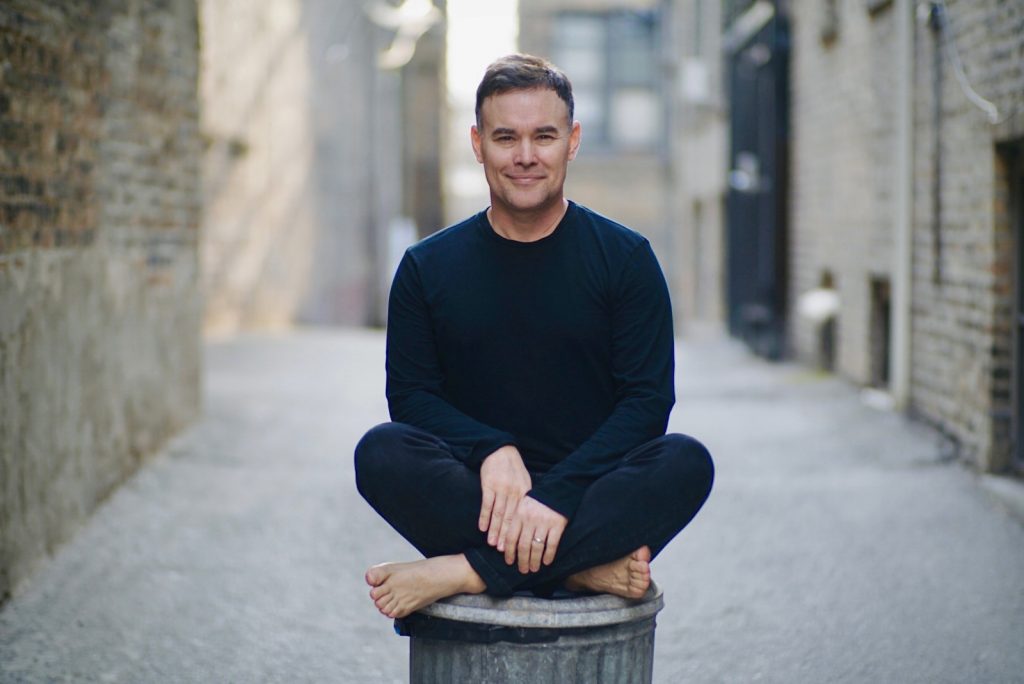
Ryan Kortman opens up about creating a site for lively debate over issues like plagiarism.

Brian Boucher

If you’re an art world maven on Instagram in recent years, you’ve probably followed whos____who, which put uncannily similar artworks side by side and created a lively place for debate over issues of originality and plagiarism.
It all started in 2016 with a painting of a face by Tyson Reeder alongside a nearly identical one by Nicole Eisenman, posted without caption, as all the posts would be, leaving the viewer to decide—if they cared to—which came first.
Soon, there was a grid of artworks incorporating tires by the likes of Rob Pruitt, Ry Rocklen, and Daniel Arsham. Another grid of artworks incorporating brooms, by artists from Joseph Beuys to Lynn Hershman Leeson. And on and on. In 2020, the account added photos of artists and lookalike celebrities: Nick Nolte and Mark Grotjahn; Jeff Koons and Mister Rogers; O.J. Simpson and Henry Taylor.
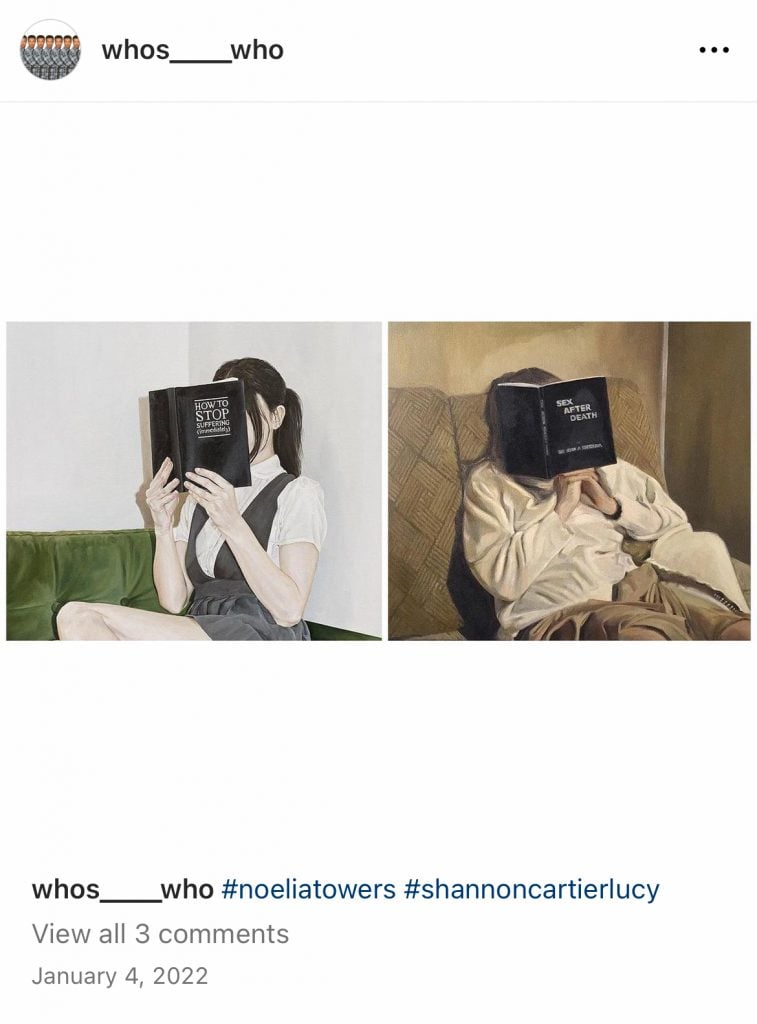
Critics loved it. Artnet News’s Rachel Corbett praised the account in 2018, when it had 13,000 followers. By the time Mostafa Heddaya wrote about it in Artforum, in 2022, it had upwards of 50,000. All along, the poster’s identity remained unknown.
Now, that number is 64,000, but a recent post has an image of multiple Michael Keatons over the words “the____end.” (The image, also the profile photo, is from the 1996 movie Multiplicity, in which Keaton gets cloned.)
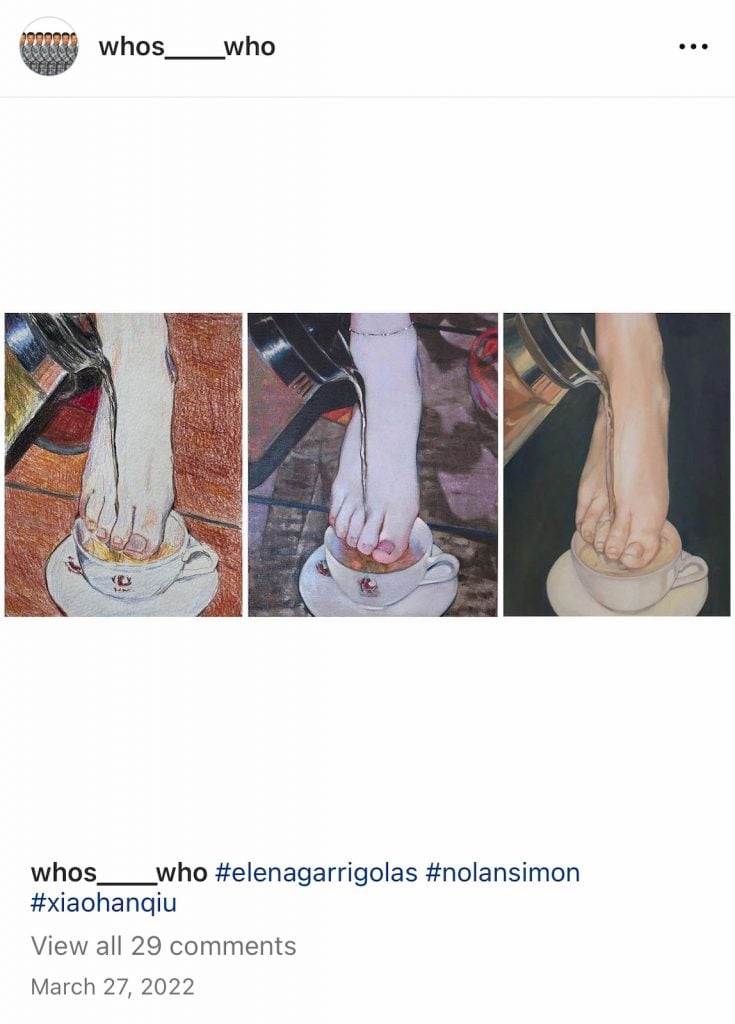
Now, Plaster magazine revealed the poster’s identity: contemporary art collector Ryan Kortman, who attended the School of the Art Institute of Chicago, and still lives in the Windy City. The artist’s life seemed too precarious, and he works as a video editor at an advertising company, which provides a small collecting budget. An interview with Collecteurs shows him with pieces by artists like Gina Beavers, Sayre Gomez, Jamian Juliano-Villani, and Avery Singer from as early as 2011.
“I’m a little bit of an outsider to the art world geographically, and the social component is such a huge part of it,” he said. “At the same time I feel a real sense of belonging. It’s the thing I care about most in my life—and I’m a husband and father!”
The account had its genesis in a mild bout of depression. An admirer of public-minded collectors Herb and Dorothy Vogel, Kortman aspired to a public exhibition of his holdings, which came to fruition in 2015 with “Buying Friends,” at the Urban Institute for Contemporary Arts in Grand Rapids, Michigan. During a post-exhibition letdown, he was seeking excitement.
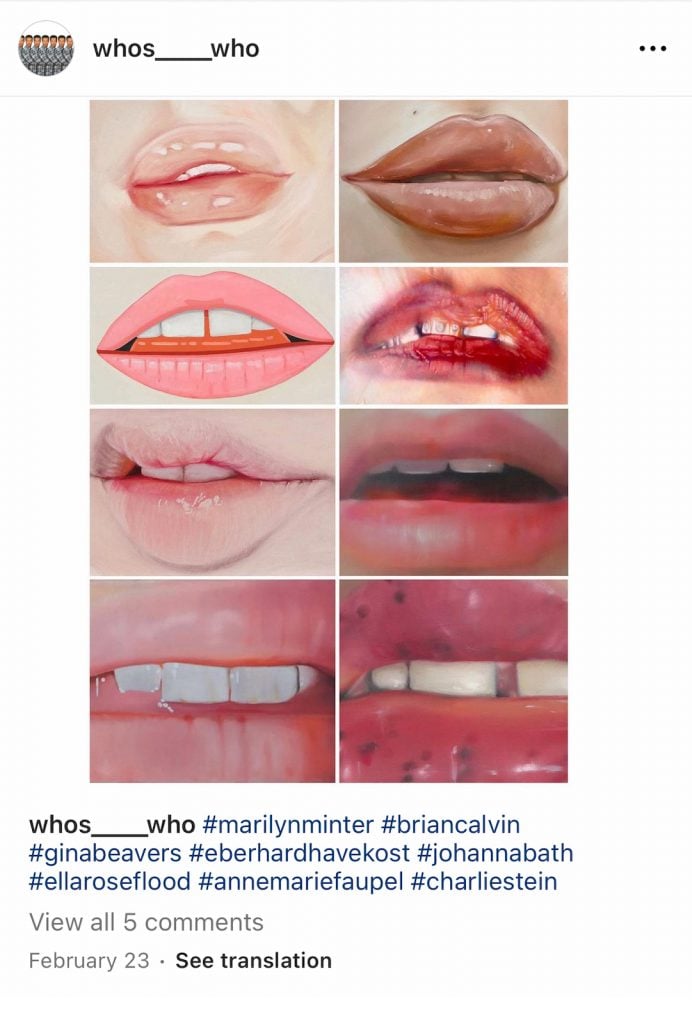
“All my collecting was done online, even before social media, when it was just artists’ websites,” he said. “I’m always consuming images on screen, and I rarely forget anything I’ve seen. I would start seeing striking similarities, like artists on different coasts producing similar images. So, I carried these around in my mind obsessively and maybe a year or so after the exhibition I put them together and built up the courage to post it.”
So why quit? Partly because it’s not as popular as it might look, he said, and posts he cares a lot about don’t get much engagement. He got a fair bit of pushback on the artist-celeb postings, too, he said, adding that they actually lost him followers, with commenters saying, “I thought this account was about art!”
“I would spend six hours on a comprehensive grid post and think that it would have some impact, maybe inspire an artist to change course, but then I was wondering why the ‘likes’ were down so much, and I saw that it reached 2,000 people out of 65,000,” he said. “It was an exercise in futility.”
“Here’s the exact moment when I decided,” he said. “I was sick and spending a lot of time thinking about remarkable-looking people from art history. Robert Longo has poofy hair and glasses. I don’t follow fashion, but Yves Saint-Laurent popped into my head. Engagement was boosted, but then Longo commented, saying, ‘Yikes.’ It was an indicator of how far the reach of this page had come, but at the same time it was clear he did not like it. This was nothing new, but I did care about his opinion, so I thought, ‘Lets just be done.’”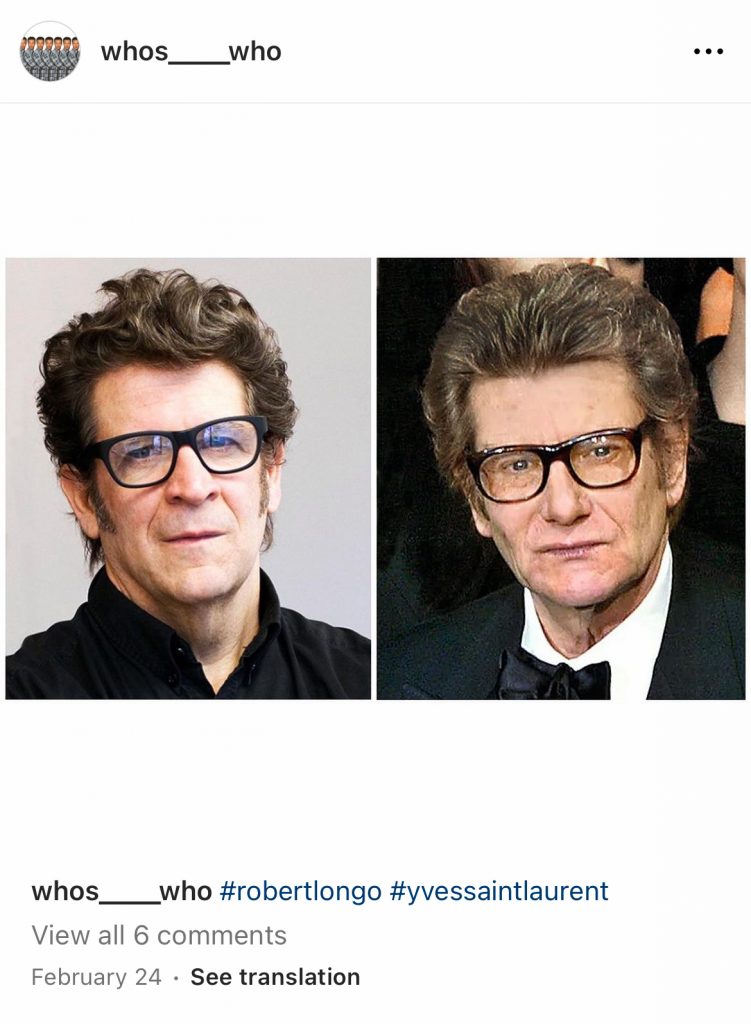
That bit about getting an artist to stop what they were doing might suggest that Kortman’s motivation was to call out plagiarism all along, but he doesn’t see it that way.
“I did get a fair amount of submissions and used some of them, but if it was an artist saying, ‘So-and-so’s copying my art,’ that turns me off,” he said. “I don’t care enough to do the research to determine dates. That’s not at all interesting to me.”
So what was the goal?
“My major motivation has been to be a service for collectors,” he said. “I don’t think galleries are always working with the collectors’ best interest in mind, because the competition to retain artists and keep the doors open is the first priority. Collectors need to educate themselves or work with a knowledgeable advisor. It can be an expensive endeavor to learn as you go.” (Kortman does some advising, so take his cheerleading with a grain of salt if you like, but he has admitted, in the Collecteurs interview, to regret after buying one or two works because of the artists’ salesmanship.)
In the end, he said, the account’s mission could be summed up in two words: “Buyer beware.”